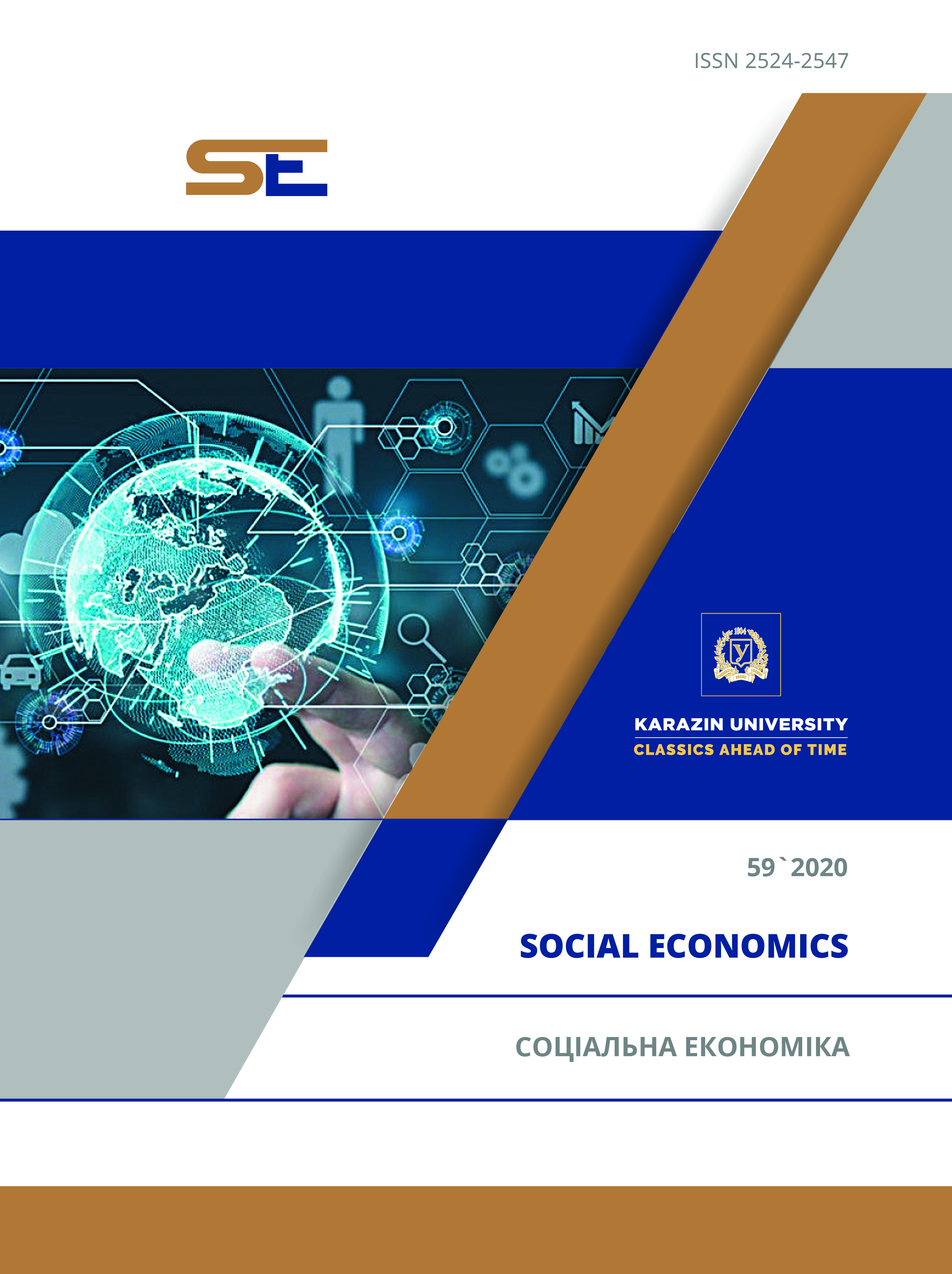Forecasting and analytical research of world economy development by international institutions: trends and overview
Abstract
The article identifies international institutions that create global economic forecasts. Such forecasts are plausible and do not aim to predict the future. The study analyzes long-term forecasts of different times, covering the periods up to 2020, 2030 and 2050. The main task of comprehensive long-term forecasting is to identify the risks and opportunities that carry key political and economic trends for each country and the world as a whole. At the present stage, the forecasting procedure has a purely individual character. The effectiveness of most international institutions remains low. This is due to limited financial resources, differences in ideological and political status.
The most well-known publications of the comprehensive long-term forecasting of the National Intelligence Council and the Atlantic Council of the United States are: a series of reports "Global Trends" - forecasts for 2025 and 2030. Global Trends 2030: Alternative Worlds explains the rapid and multifaceted transformations of geopolitical, economic and technological factors, as well as the trajectory of such transformations over the next 15-20 years. The UN and other international organizations, the United States, the European Union and China pay special attention to long-term forecasting. The first study in the series "The World in 2050" was published by the Department of Macroeconomic Analysis PricewaterhouseCoopers in 2006. The new report presents long-term forecasts of potential GDP growth rates until 2050 for the 32 largest countries in the world. The analysis and forecasts contained in the World Bank's Global Economic Prospects study are an integral part of the IMF. World rating agencies play a significant role in assessing the state of development of the world's largest companies. Analytical and forecasting research is an important element of scientific and technical development management. A brief overview of the experience of forecasting scientific and technical development is contained in the analytical report of the Research Center for Industrial Development Problems of the National Academy of Sciences of Ukraine.
Downloads
References
Wilcox, W. (1970). Forecasting Asian Strategic Environments for National Security Decision Making: A Report and A Method. The RAND Corporation. Retrieved from https://www.rand.org/pubs/research_memoranda/RM6154.html. (in English)
Suhorukova, M. O. (2016). Manifestations of global institutionalization of fiscal policy in the world economic system. Scientific Bulletin of Uzhhorod National University. Series: International Economic Relations and the World Economy, 8(2), 94-98. (in Ukrainian)
Henry, J., & Pomeroy, J. (2018) The World in 2030. Our long-term projections for 75 countries. ECONOMICS GLOBAL. September. Retrieved from https://enterprise.press/wp-content/uploads/2018/10/HSBC-The-World-in-2030-Report.pdf. (in English)
Forrester, J. (2003). World dynamics. Moscow: Terra Fantastica. (in Russian)
Mazurova, E. K. (2015). Global regulation of the economy: current potential and transformation opportunities. Bulletin of Moscow University. The Economy, 6, 3-16. (in Russian)
The US National Intelligence Council. (2008). Global Trends 2025: A Transformed World. Retrieved from https://www.files.ethz.ch/isn/94769/ 2008_11_Global_Trends_2025.pdf. (in English)
The US National Intelligence Council. (2012). Global Trends 2030: Alternative Worlds. Report of the US National Intelligence Council. December. Retrieved from http://www.nkibrics.ru/system/asset_publications/data/53c7/b3a1/ /676c/7631/400a/0000/original/Global-Trends-2030-RUS.pdf?1408971903. (in Russian)
Rizhkov, M. M. (2011). Information and analytical activities of international non-governmental organizations. Current issues of international relations, 103(1), 17-23. Retrieved from http://nbuv.gov.ua/UJRN/apmv_2011_ _103%281%29__5. (in Ukrainian)
Pricewaterhouse Coopers. (2015). Forecast of the development of the global economy from 2015 to 2050. Center for Humanitarian Technologies. Retrieved from https://gtmarket.ru/news/2015/02/11/7089. (in Russian)
Polonyk, S. S., Khorobrykh, Je. V., & Lytvynchuk, A. A. (2016). Trends in the world economy and prospects for development. Economic Bulletin of the University of Pereyaslav-Khmelnytsky GPU. G. Frying pans, 29/1, 249-258. (in Russian)
A World Bank Group. (2020). Global Economic Prospects. Slow Growth, Policy Challenges. Flagship Report. January. Retrieved from https://www.worldbank.org/en/publication/global-economic-prospects. (in English)
Research Center for Industrial Development Problems. NAS of Ukraine. (2018). A brief overview of the experience of forecasting scientific and technological development. Analytical reference. Kharkiv. Retrieved from https://ndc-ipr.org/media/posts/presentations/Досвід_прогнозування_НТР_vG3PAKa.pdf. (in Ukrainian)
Nations Unies. (2019). Statistical Yearbook. Еdition Sixty-second issue United Nations. New York. Retrieved from https://unstats.un.org/unsd/publications/statistical-yearbook/files/syb62/syb62.pdf. (in English)
Yurchishin, V. (Ed.). (2018). Global trends and prospects: economic economy and Ukraine. Kiev : Zapovіt. (in Ukrainian)




